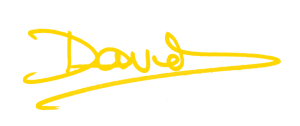We’ve all been there, The Big Interview. When it comes to recruitment, we all tried to present the very best version of ourselves.
Every candidate will do the same. The problem is that this may blur the key competencies any interviewer needs to be sure of. Get it right and you’ll recruit the right person for the right job and your team will prosper. Get it wrong and that sparkling, organised team player who is a whizz at PowerPoint may turn out to be a chaotic Facebook junkie who struggles with keyboards!
Techniques for Recruitment Success
The conversations you have when you interview, are the window you have for maximising your chances of success.
In this series of three blog posts we will look at three key elements of successful Recruitment and Interviewing.
- Preparation – What are you looking for and how will you find it?
- Behavioural Event Interviewing – The EARL Model
- Intangibles – Stuff that’s hard to judge
The right person for the role will have the right competencies for the role. Clearly some of these are measurable before they get they settle into the interview hot seat – academic qualifications, industry experience, seniority in previous jobs etc. Your interview time is not best used checking these.
It’s the other competencies you really want to know about: teamwork, communication, initiative, entrepreneurship. These don’t jump off the CV.
The evidence of these competencies is gathered in the behaviours that you see. What would a good team player do? Coach others in the team. Share information? Work beyond the call of duty on something that isn’t their specific responsibility?
There are some obvious criteria but in the end it is what you want to see from that person when you work with them. So your first step is to define the competencies you want for the role, and within that the behaviours that, for you, define that competency. Your interview should focus on a set of competencies you wish to “test”.
So lets say you have decided you need someone who is creative. And you define someone who is creative as someone who:
- Challenges the traditional way of doing things.
- Doesn’t instantly judge the ideas of others.
- Happy to take risks to make a bigger impact.
So this is the focus of part of your interview. You may of course have a couple of others to cover in the time you have. So how will you find out whether the person who walks in the room is creative? Ask them? You know what they’ll say,
“Oh yes I’m really creative, I’m always thinking of new ways of doing things …”
Direct questioning may not give you the truth. You need to ask for real experiences and question their story to find the evidence you need. It’s harder to lie about the truth.
Behavioural Event Interviewing
The basic principle of Behavioural Event Interviewing is that a person’s behaviour in the future is likely to be consistent with their behaviour in the past. If historically I’m reluctant to share useful information with my colleagues because I know it gives me an edge, then I am likely to continue to do so. A new job will not automatically trigger a different behaviour.
Interviewees will have their Public Profile – one they are willing to share. Underneath that is their Private Profile – their “non-work” persona which they may be less likely to share.
Beyond all that is the key to that person – their core drivers.
If you ask someone to recall a previous event, they will inevitably start playing the tape of that event in their head. It is difficult to misrepresent their role to the outer world when the voice in the inner world is giving the reality of that time. You are therefore more likely to hear evidence of their private profile and their core drivers.
So your key tool for recruitment success is using stories about the past to test competencies and behaviours. To get the most out of these accounts you also need a structure to manage the discussion and determine what the reality was.
In the next post we’ll discuss the EARL Model to help you do that.

David Solomon
Managing Director, Sun and Moon Training
@SunMoonDavid
Photo copyright: dacosta / 123RF Stock Photo
